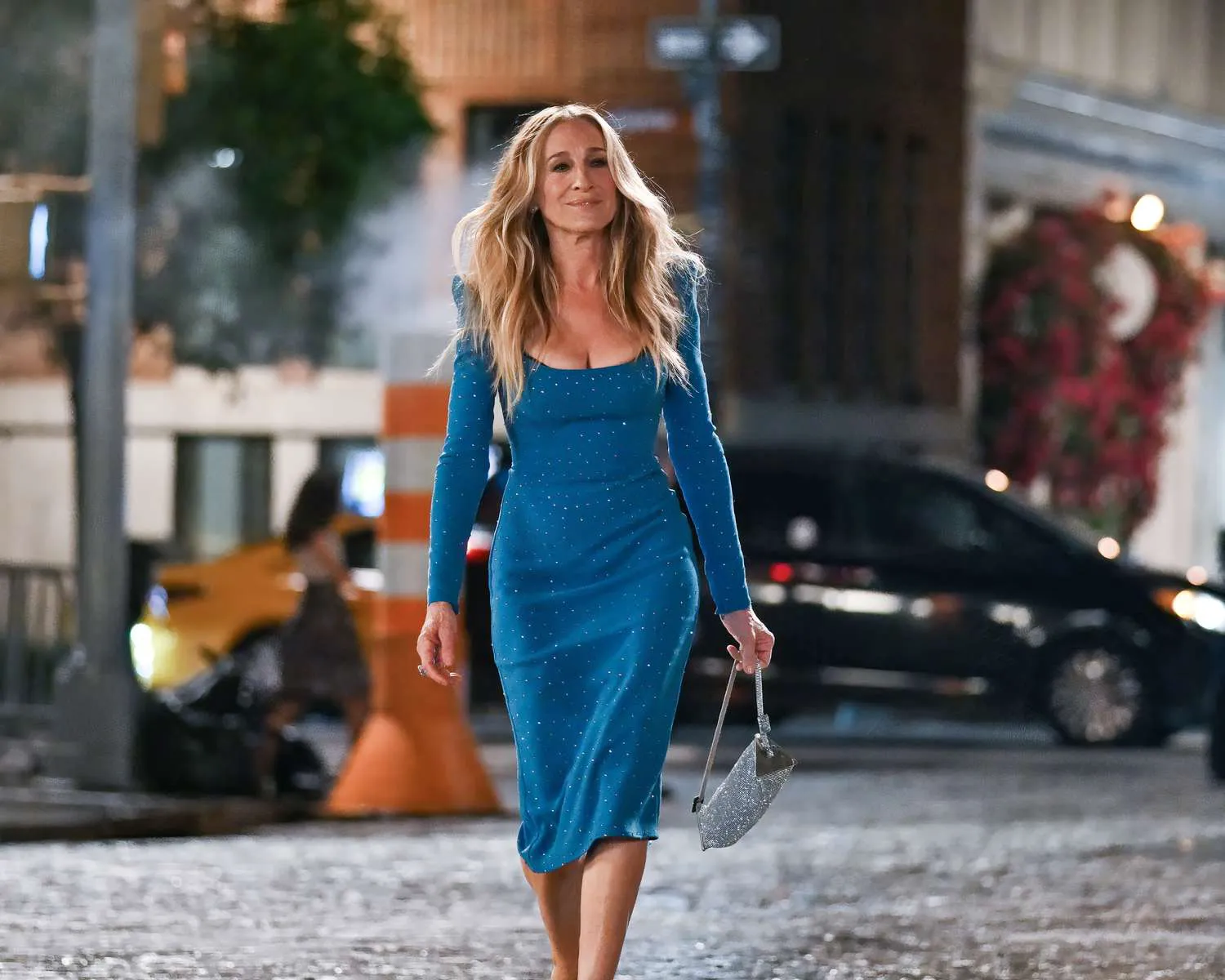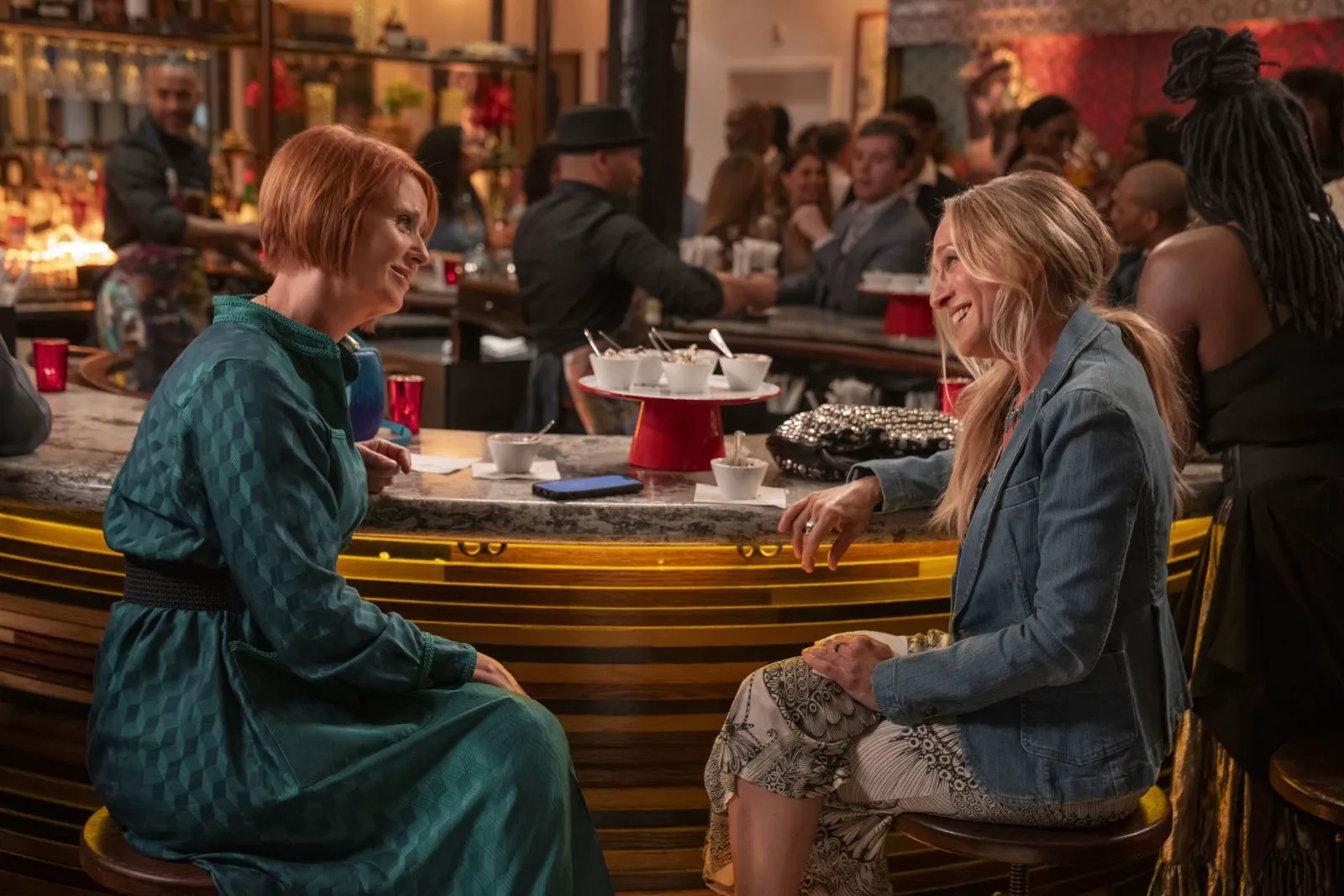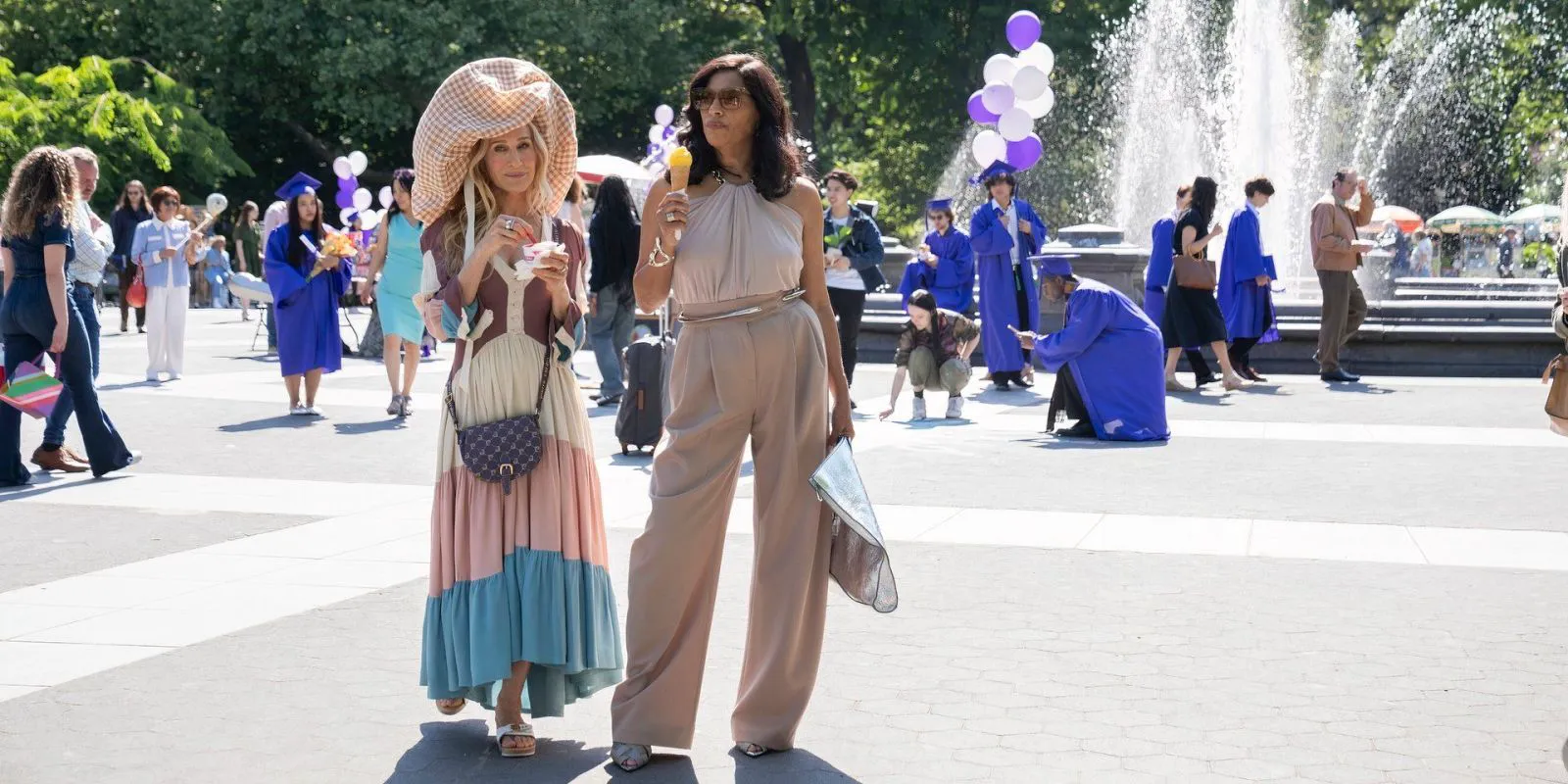Is “And Just Like That…” Still Trying Too Hard?
“Sex and the City” shaped a generation of women, but its sequel, “And Just Like That…”, is unlikely to achieve the same iconic status. The series doesn’t aim for a grand reinterpretation of female aging, nor does it fully capture modern trends. Ultimately, it’s a show you watch “just because,” without expecting groundbreaking experiments or new insights into the lives of women after fifty. For three seasons, the creators have been trying to revive a horse that peaked in its prime—and perhaps rightly so. The only real cause for celebration might be Kim Cattrall’s decision to return to the spin-off for a symbolic 74 seconds.
Familiar Faces, Familiar Problems
Charlotte York (Kristin Davis) remains the quintessential homemaker, navigating elite university admissions with her influential friend Lisa Todd (Nicole Ari Parker). Miranda Hobbes (Cynthia Nixon) explores the boundaries of her newfound sexuality, while Carrie Bradshaw (Sarah Jessica Parker) continues to be defined by her relationships with men. The third season doesn’t fix the main flaw of the previous two: most of the characters are more focused on patching up the past than looking to the future. While the first two seasons were a painful but sometimes touching attempt to integrate familiar characters into a new reality, the plot now feels driven by inertia. The women have accepted their age and social status, and have become completely immersed in domestic comfort. They remain wealthy Manhattanites in their fifties, whose biggest problem is deciding when and where to go for brunch.

Sarah Jessica Parker as Carrie Bradshaw in “And Just Like That…”
The Inclusion Paradox
From the start, the reboot desperately tried to prove that the world of “Sex and the City” is now diverse and inclusive. Viewers were introduced to a host of new characters, from comedian Che Diaz (Sara Ramirez) to law professor Nya Wallace (Karen Pittman) and realtor Seema Patel (Sarita Choudhury). They were supposed to balance the chaos in the lives of the original trio and breathe life into the series. But in reality, the opposite happened: the more time spent on the new friends, the more the old dynamic crumbled. And Carrie’s universe, as we know, struggles to maintain balance when Bradshaw isn’t the center of attention. In the third season, the imbalance is particularly noticeable—the women orbit around the columnist, losing their own shape and depth. Seema and Lisa Todd, who came to Charlotte’s aid, were supposed to balance the chaotic antics of the beloved characters, remaining in the third season, unlike Diaz and Wallace. But there’s a catch: both characters are wealthy and privileged New Yorkers, making it increasingly difficult to connect with their lifestyle. One of the main features of “Sex and the City” was observing the development of self-made women: of course, there were illusions, and how Carrie paid for her shoes with a single column a week remains a mystery. “And Just Like That…” simply asks us to accept the substantial starting capital of the new friends. The crisis doesn’t seem to affect the already familiar characters either: Miranda calmly rents an Airbnb and doesn’t feel the turbulence after her divorce, Carrie lives in a castle, and Charlotte pursues art more for pleasure.

Sarah Jessica Parker as Carrie Bradshaw in “And Just Like That…”
Trying Too Hard to Be “Woke”
The sequel still tries to cram in too much—as if the writers ticked off every box on a list of trendy, “woke” topics. The effect, however, is the opposite: everything becomes equally flat and lifeless, like images from a glossy magazine. The characters lose emotional connection, especially Carrie, who becomes completely self-absorbed. She lives in a frighteningly luxurious townhouse, bought after selling her iconic apartment, and maintains a long-distance relationship with Aidan, who has long since returned to Virginia and is busy with his son. This form of intimacy only allows Carrie to boast—even at 56, she can be in a relationship (and it doesn’t matter that it’s long-distance). Charlotte suddenly remembers that she was a gallery owner and returns to selling art between family chores, but continues to be overprotective of her daughters. Lisa, whose storyline could have been one of the most expressive, inexplicably decides to compete with other parents along with Charlotte. Seema, who could have been the “new Samantha,” suddenly decides to adapt to a man she likes, contrary to her character, and Miranda is on the run again: she’s looking for housing, going on dates, taking on human rights cases—and, it seems, doesn’t know which of these is more important.

Cynthia Nixon as Miranda in “And Just Like That…”
The Loss of Mystery and the Return of Old Patterns
With Mr. Big, the writers killed the mystery that fans of “Sex and the City” had been trying to solve for several seasons: are Carrie and Big really an ideal couple, or just a prime example of toxic codependency? They didn’t allow us to reflect on this, leaving Bradshaw alone: it’s worth noting that this is one of the best decisions the creators made. A woman who has spent her life finding herself in other men suddenly loses her center of gravity—and now she has to rely only on herself. The idea of showing “autumn” age could have breathed new life into the project if the creators hadn’t brought back Aidan, depriving Carrie of the chance for independent growth. Of all the character arcs, Bradshaw’s trajectory turned out to be the most tragic and outdated: like Joan Didion, Carrie writes her version of “The Year of Magical Thinking” about grief, but has it helped her cope with old patterns? Hardly.

Sarah Jessica Parker as Carrie Bradshaw in “And Just Like That…”
Safe Stability vs. Experimentation
Online, people reason logically: we don’t like watching the continuation of “Sex…” because internal ageism prevents us from watching the grown-up friends. There is some truth in this: the phone sex scene between Carrie and Aidan doesn’t look exciting at all, Miranda’s adventures happen more out of spite, and Charlotte has completely lost her personality in her role as a mother. But the problem is deeper, because the first season of the reboot set the bar: a woman of age can explore her sexuality in a new way, learn to live alone, return to her favorite job from the family nest to become herself again. Then it seemed that the series would go into a zone of risk and honesty. However, after the problematic second season, it became clear in the third season that all these expectations had vanished: instead of experimentation and inner freedom—safe stability. The creators seem to have chosen to hide real maturity behind social conversations and bright outfits, which, unfortunately, no longer set fashion standards. And despite the fact that there are noticeably fewer men around the heroines, they are still trying to prove something to the society around them, rather than reconcile with themselves.
Unfortunately, any attempts to integrate the heroines into the modern world are unsuccessful: conversations about wokeism, racism, activism, and other -isms seem contrived and programmatic. Like the meetings of lonely ladies with new characters: in “Sex and the City,” fans didn’t even guess that a random passerby or waiter would become the next lover, while “And Just Like That…” literally shoves new partners under the noses of both the heroines and the viewers. In total, all these shortcomings—from Carrie’s egoism to the weak script—deprive “And Just Like That…” of the sharpness for which we loved “Sex and the City.” It’s a pity, but instead of sincere stories about support and a new stage of life, we got a set of clichés that touch on the female experience for the sake of it.